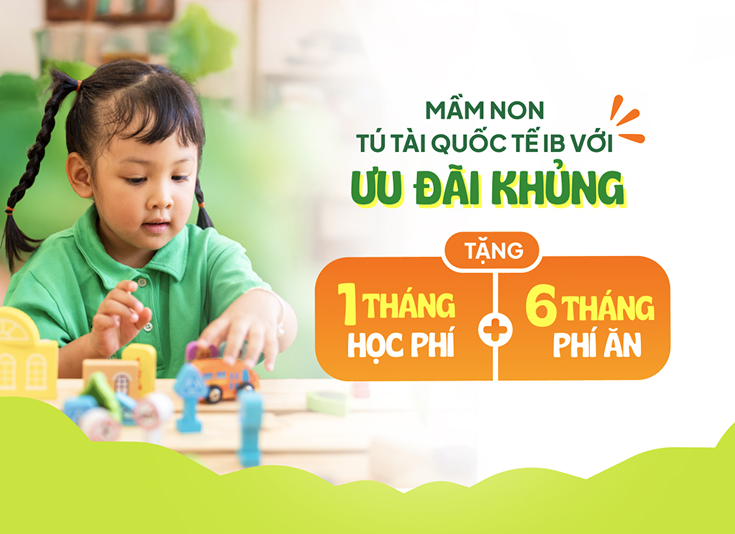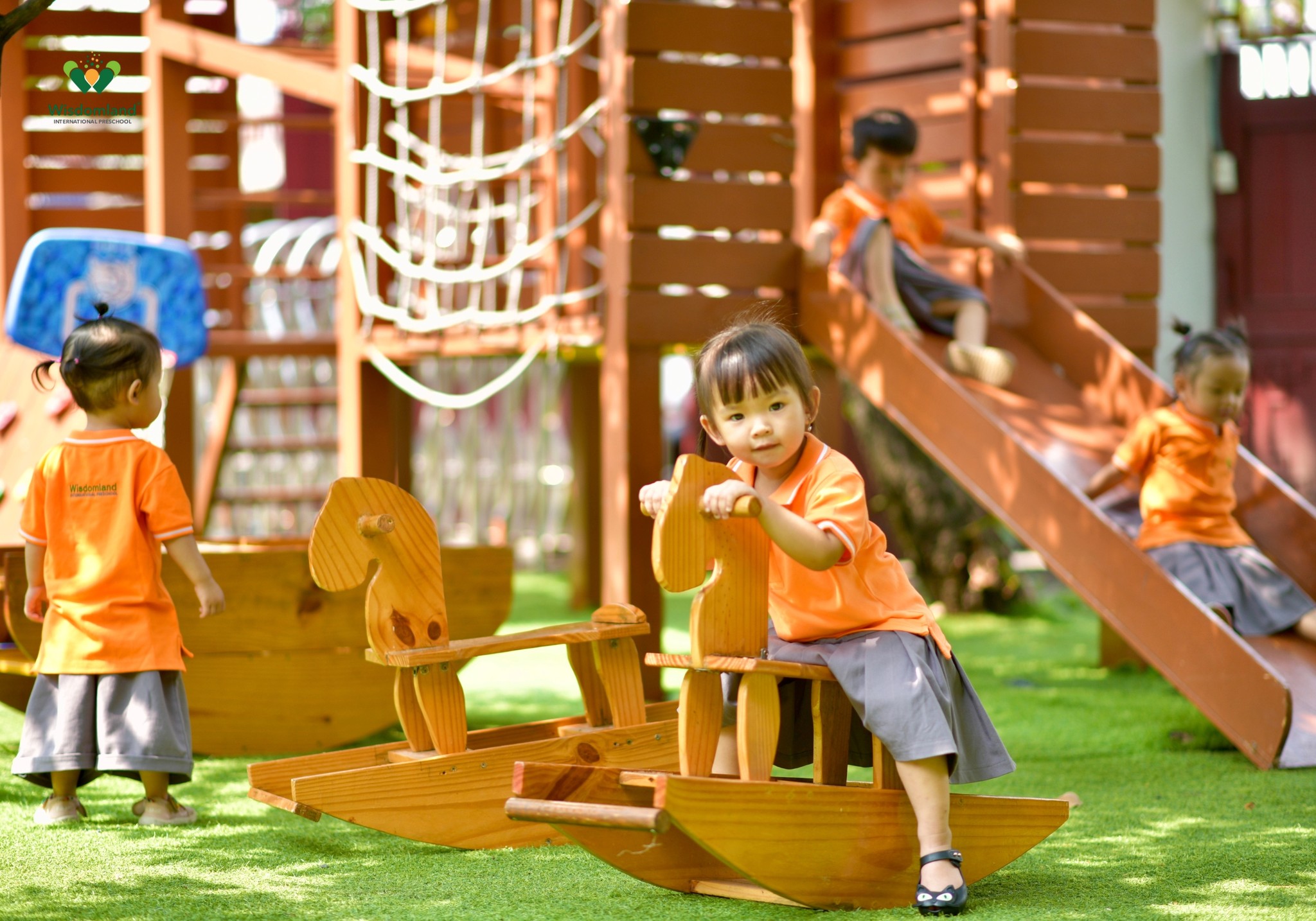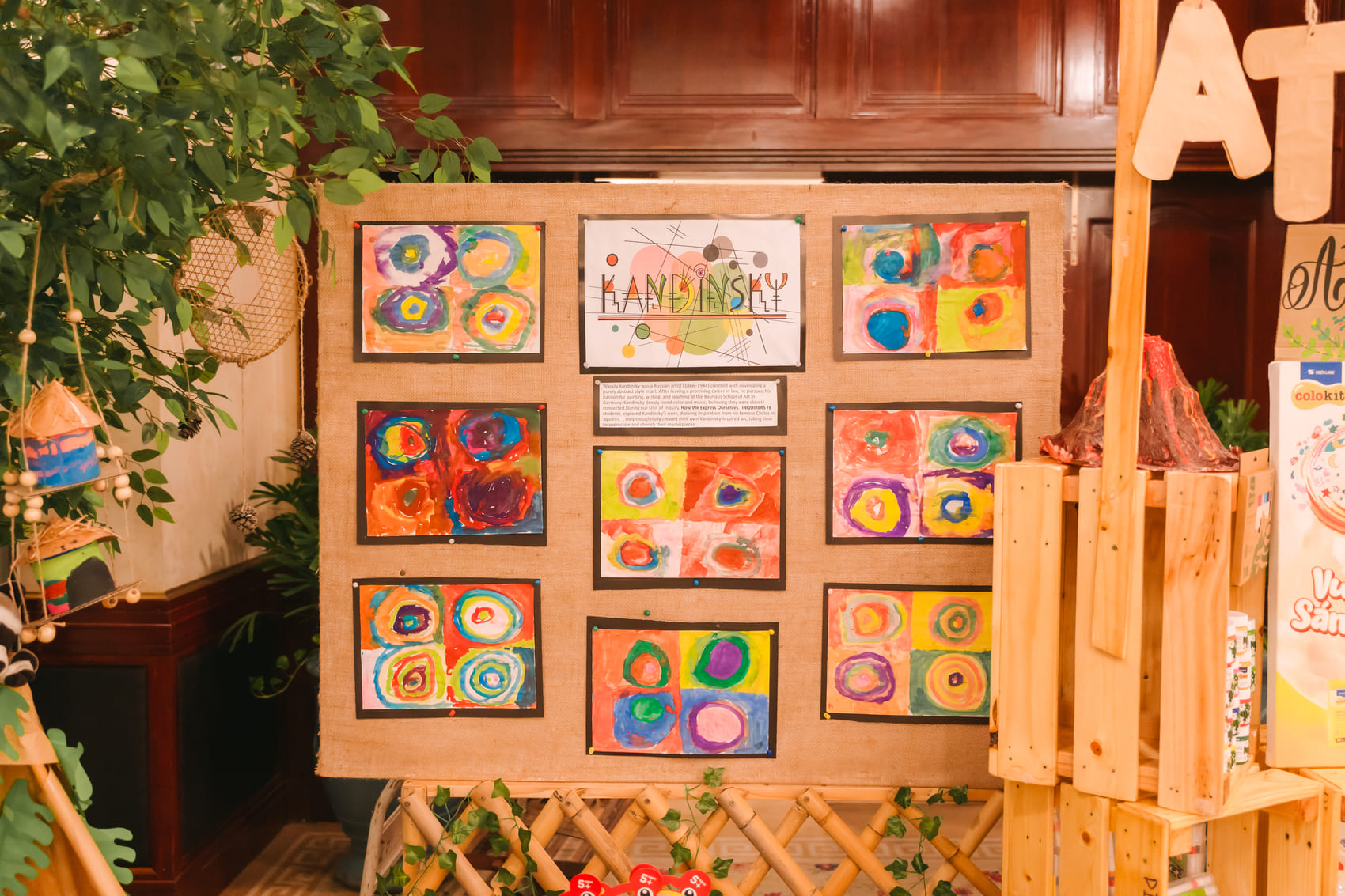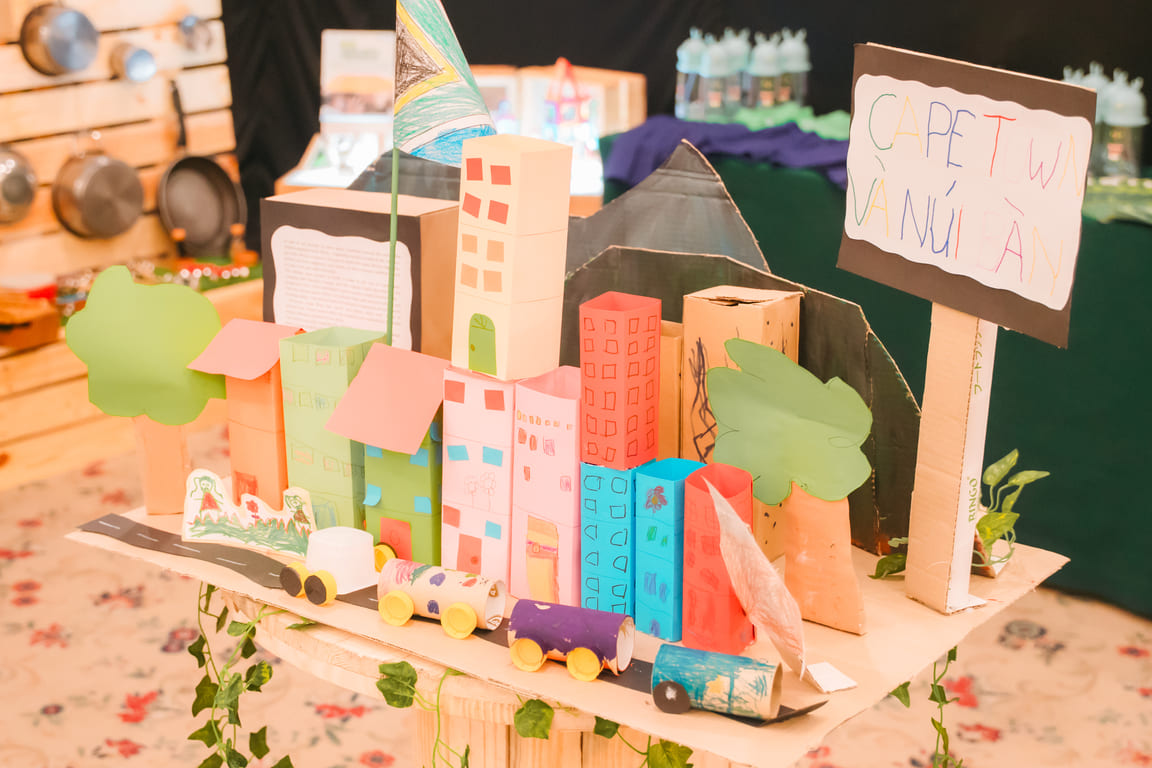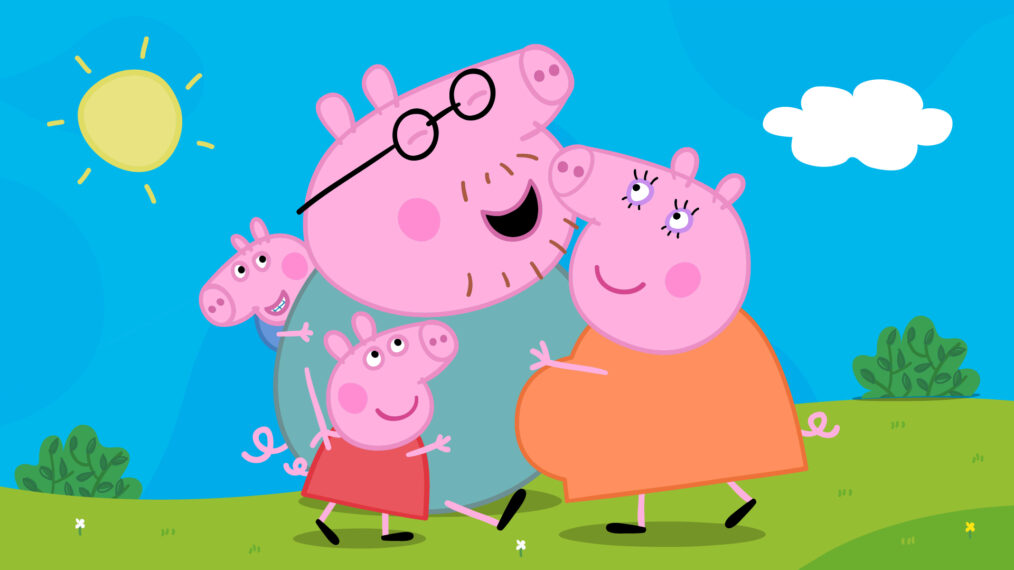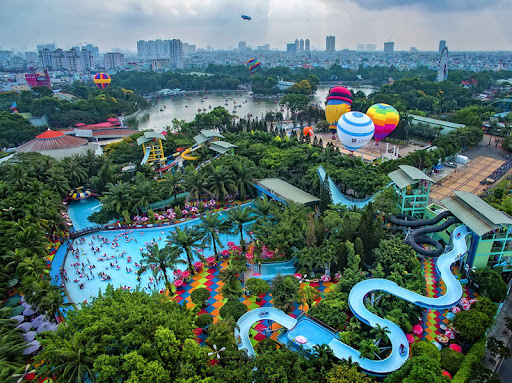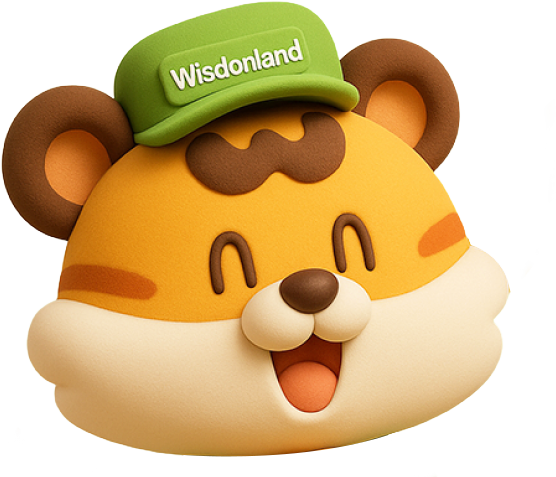When Children Are “Little Citizens” Full of Potential
Today, early childhood education is no longer simply about childcare, teaching letters, or organizing games. It is the golden stage for fostering independence, creativity, emotions, and foundational character.
One of the educational philosophies highly valued by many experts and schools worldwide is the Reggio Emilia approach — originating from Italy, and increasingly popular in Vietnam.
At Wisdomland, Reggio is not just a name; it is the philosophy that runs through every learning, play, daily routine, and interaction with children.
1. What is the Reggio Emilia approach?
The Reggio Emilia approach was developed after World War II in the town of Reggio Emilia (Italy) by educator Loris Malaguzzi and local parents. They believed that:
“Every child is born full of potential, possessing a hundred languages to express themselves — not only through words, but also through art, music, movement, emotions…”
Core principles:
- Children are the center of the learning process, not imposed upon.
- Teachers act as companions, observers, and provocateurs, not traditional lecturers.
- The learning environment is the third teacher — encouraging creativity and exploration.
- Open-ended learning projects inspired by the children’s genuine curiosity.
2. Major differences from traditional methods
| Criteria | Traditional Education | Reggio Emilia |
| Role of the child | Passive, obeys instructions | Active, able to choose |
| Learning method | Follows directions | Learn through real experiences |
| Teacher | Teach – test – grade | Observe – question – collaborate |
| Classroom space | Fixed desks and chairs, monotonous | Open – flexible – with natural materials |
| Learning outcomes | Uniform, template-based | Diverse, carrying individual marks |
The essence of Reggio is not about “what is taught,” but about how to create an environment for children to learn by themselves — feel, and create.
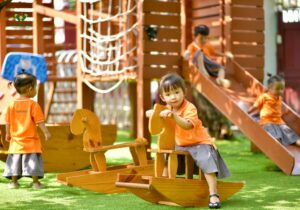
3. Why has Reggio Emilia become increasingly popular in Vietnam?
In recent years, many international and bilingual preschools in Ho Chi Minh City, Hanoi, Da Nang, and elsewhere have adopted Reggio in their curricula. Why?
Because it respects individual differences
Vietnamese children show a wide range of personalities. Some enjoy physical activity, others prefer drawing; some speak a lot — others are quiet. Reggio does not force all children to be the same, but creates opportunities for each child to express their own “language.”
Because it reduces pressure and increases positive emotions
Instead of requiring children to “do correctly and quickly,” Reggio focuses on:
- Suggesting rather than forcing
- Praising effort, not comparing
- Creating warm spaces with natural light and plants
This is particularly important for urban Vietnamese children who face pressure and spend less time with parents.
Because it develops body – mind – intellect in balance
Vietnamese parents increasingly care about nurturing emotions, intellect, and life skills holistically rather than only teaching knowledge. Reggio is ideal for that goal.
4. Reggio Emilia at Wisdomland – not theory, but daily practice
At Wisdomland International Preschool, we apply the Reggio philosophy in practical and approachable ways:
Learning environment:
- Open, flexible classrooms with natural light
- Child-friendly materials such as wood, fabric, clay, and recycled paper
- Dedicated art corners, reading nooks, and planting areas
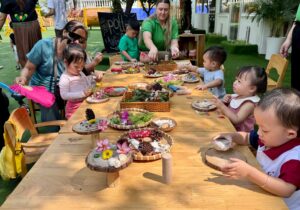
Role of teachers:
- They don’t stand at the front lecturing; they sit with children, converse, and ask open-ended questions
- Record each child’s development progress instead of comparing with peers
- Respect children’s emotions — listen even to the small things
Project-based activities:
- Children choose topics they are interested in: for example “insects around the school,” “why does it rain?”, or “how to make cakes from rice flour”
- Together they draw, fold, experiment, tell stories, and build models
- There is no single “correct answer”; instead, it is a journey of exploration that expands thinking
✨ Individual recognition:
- Each child has a personal learning portfolio containing photos, drawings, and teacher notes — a “map of growth”
- Instead of “grading,” teachers share progress with parents through a positive perspective
- A true story: When a shy child found their “100th language”
Three-year-old Linh, on her first day at Wisdomland, barely spoke and did not play with others. She sat quietly in the corner, making scribbles on paper.
After a few weeks, teachers noticed that during art activities Linh painted with great focus and creativity. Instead of forcing her into group games, the Reggio classroom provided opportunities for Linh to express herself through drawing. After two months, Linh began to:
- Paint a birthday picture for a friend
- Share her artwork with the teacher
- Be more confident during group discussions
That is the magic Reggio brings: honoring each child’s individual developmental pace rather than forcing them into a mold.
6. What do parents say about Reggio classes at Wisdomland?
“At first I was a bit unsure because I didn’t understand Reggio. But now I’m truly impressed. My child says such ‘grown-up’ sentences like: ‘Mom, today I discovered a bean plant with three leaves — but I like it because it’s a bit different from the one that has two leaves.’ I feel my child is learning to observe and love life more.”
— Ms. Mai, parent of Moon, Binh Thanh campus
7. Reggio is not a luxury — it is an education that respects humanity
Some may think Reggio is “complex” or “only for expensive international schools,” but in reality:
- Reggio does not depend on cost, but on how the classroom is organized
- Its greatest value is changing the mindset of early education: viewing children as companions, not “subjects to be molded”
At Wisdomland, we are proud to bring this philosophy into Vietnamese children’s learning environments in a close, practical, and effective way.
Conclusion
Reggio Emilia is not a fashionable educational model, but a profound philosophy of respect, trust, and empowering young children. With the partnership of families and a supportive educational environment, every child can realize their full potential — in their own way.
 School Tour
School Tour 